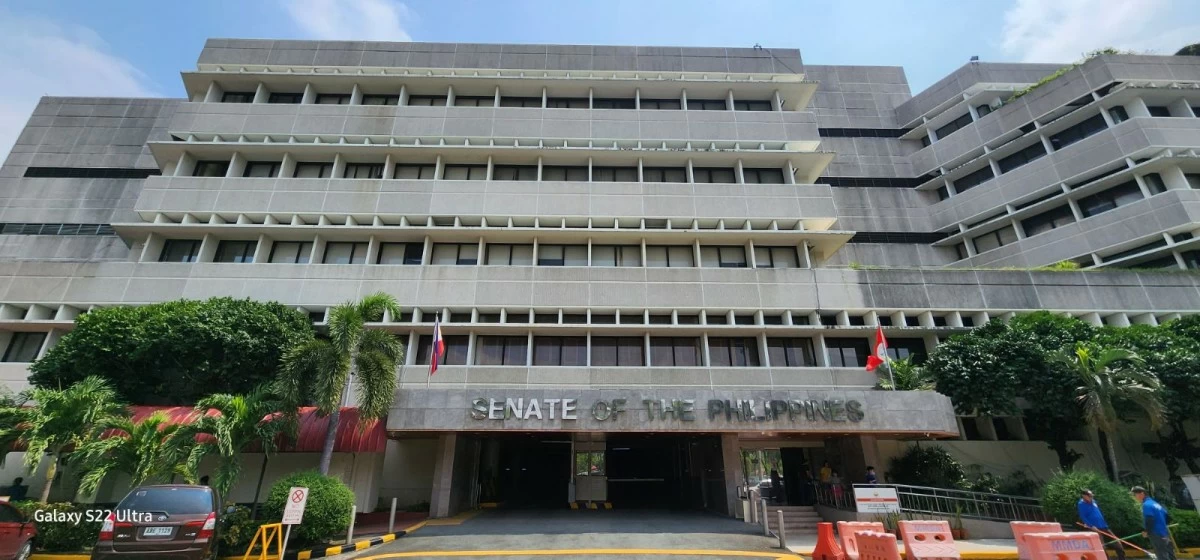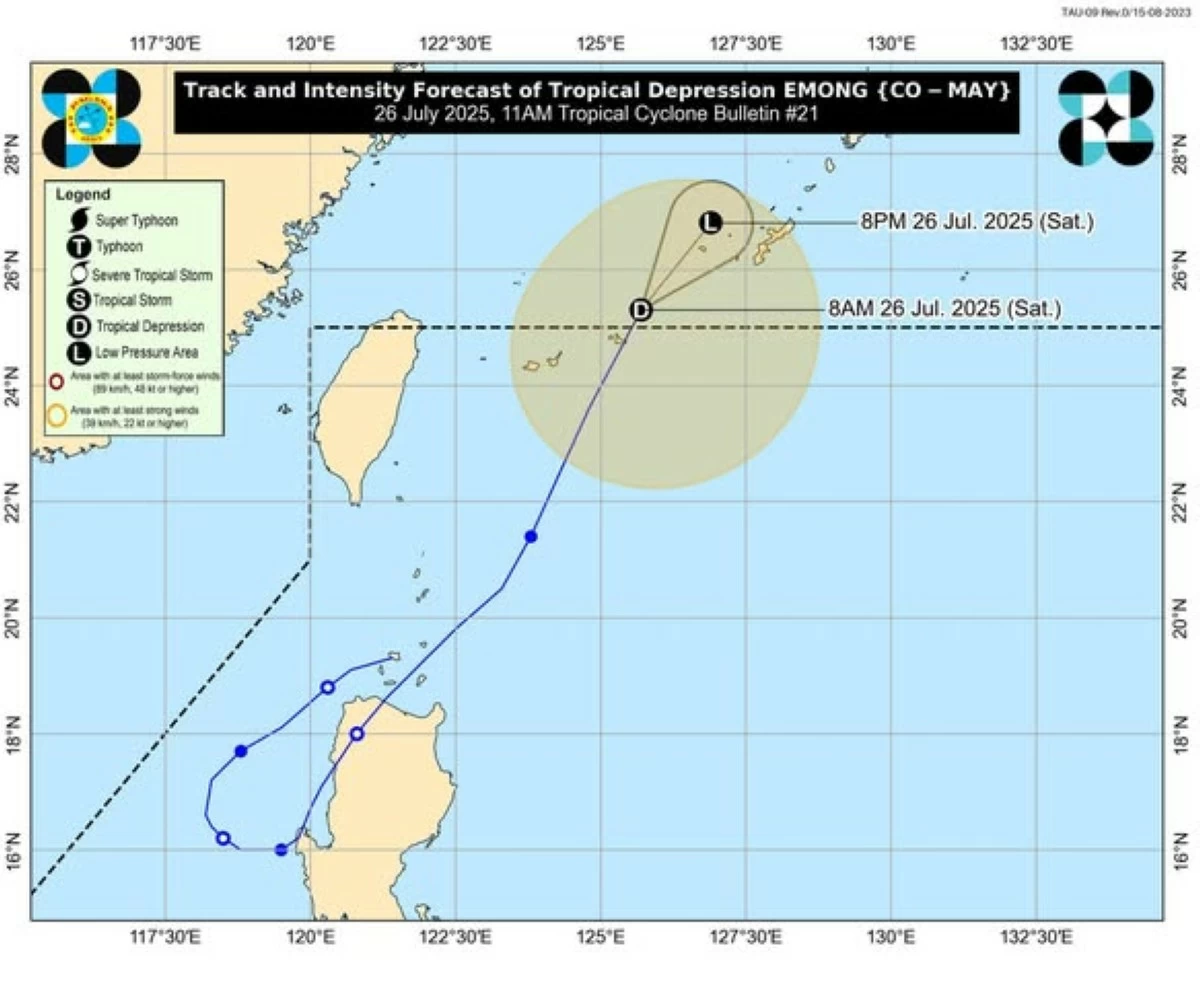
Upgrade to High-Speed Internet for only ₱1499/month!
Enjoy up to 100 Mbps fiber broadband, perfect for browsing, streaming, and gaming.
Visit Suniway.ph to learn
Senator Paolo “Bam” Aquino IV has called on the Senate to launch an extensive probe into the government’s flood control projects following the massive flooding that affected many parts of the country after several days of continuous rains.

Senate of the Philippines Building (MB file photo)
Aquino said it is necessary to examine the effectiveness of the government’s flood mitigation efforts despite the allocation of billions of pesos in public funds for flood control.
The senator noted that around P360 billion has been allocated for national flood control programs under the Department of Public Works and Highways (DPWH) and other implementing agencies, or roughly 20 percent of the total infrastructure budget of P1.6-trillion.
“Flood control ang pangako, pero flood out of control ang inabot ng taumbayan (it promised flood control, but what the people experienced is flood out of control),” Aquino said.
“Kailangang busisiin natin nang husto kung nagamit ba sa tama ang bilyun-bilyong pisong pondo para sa flood control (We need to thoroughly scrutinize if the billion pesos allocated for flood control were used properly),” Aquino said.
“Mabuti ring alamin kung epektibo pa ba ang mga plano natin sa flood control o baka nagsasayang lang at napupunta sa wala ang pera mula sa buwis ng taumbayan (It is also good to know if our flood control plans are still effective or if the people's tax money is just being wasted and going nowhere),” he added.
Aquino also stressed the importance of ensuring that communities are protected against the worsening impacts of climate change.
Sen. Joseph Victor “JV” Ejercito also lamented the state of the country after the massive flooding noting that more than P300-billion worth of public funds every year go to flood control projects.
“But instead of high-impact flood mitigation projects like floodways, pumping stations, and so on, what is in the budget is mostly drainage improvement and slope protection. Almost all the rivers are paved but they still flood. Drainage improvement is repeated but they still flood!” Ejercito reiterated.
“We should follow what is in the flood control masterplan and fund high-impact programs. Instead of dividing and making projects patchwork,” he said.
“But why do patchwork? …The people are pitiful. We are victims of floods every year!” he lamented.
In a post on Facebook, Sen. Loren Legarda reminded that it is the barangays that are responsible for general cleaning, estero clearing, sanitation, beautification, segregation, and the collection of biodegradable, compostable, and recyclable waste at the source, as part of their mandated services and facilities related to hygiene, sanitation, and solid waste management.
Municipalities and cities, on the other hand, are responsible for collecting non-recyclable and special waste, and for providing solid waste disposal systems, environmental management systems, and services or facilities related to general hygiene and sanitation, she said.
Legarda also reminded that municipalities and cities are the ones responsible for their local drainga and sewerage systems as mandated under the Local Government Code.
But in Metro Manila, the Metropolitan Manila Development Authority (MMDA) is tasked with establishing and operating sanitary landfills, managing connection points between LGUs, and coordinating metro-wide disposal systems. It is also tasked with setting and carrying out policies, standards, and programs for proper and sanitary waste disposal.
Meanwhile, the DPWH, Legarda said is the lead agency in charge of national sewerage and septage management, under the Clean Water Act, and handles the construction and maintenance of major public drainage and sewerage infrastructure.
Legarda also pointed out that outside of Metro Manila, it si the Local Water Utilities Administration (LWUA) assists in the planning, financing, and construction of systems for the collection, treatment, and disposal of sewerage, waste, and storm water.
She also said the Department of Environment and Natural Resources (DENR) is in charge of a wastewater charge system that applies to all entities discharging wastewater, including septage, into water bodies. It is also in charge of establishing water quality standards, issuance of discharge permits, manages Water Quality Management Areas, and enforces pollution control.
Asked who is in charge of flood control, Legarda stressed that all agencies are involved.
“Municipalities and Cities are in charge of seawalls, dikes, drainage, and flood control. The MMDA is tasked with flood control services, including formulating and implementing policies, standards, programs, and projects for an integrated flood control system. It is also responsible for public safety, including disaster preparedness, rescue operations during floods, and coordination of rehabilitation and relief efforts with national agencies,” she said.
“The DPWH is responsible for the planning, design, construction and maintenance of national flood control infrastructure. With the River Basin Control Office, the DPWH shall formulate a National Master Plan for Flood Control and rationalize the various existing river basin projects to ensure a unified, science-based, and integrated approach to flood management and water resources development,” she recalled.
“The DENR addresses the root environmental causes of flooding by rehabilitating forests, watersheds, wetlands, and mangroves to reduce runoff and soil erosion. In addition, the DENR plays a critical role in the protection and management of natural ecosystems by overseeing the construction, operation, and maintenance of infrastructure, including waterworks and flood control, within protected areas,” she further explained.
She also pointed out that the National Irrigation Authority (NIA) is mandated to manage irrigation systems, including those with drainage and flood control components. “On the other hand, the Climate Change Commission (CCC), from a broader perspective, supports flood resilience planning by integrating climate and flood risk reduction into development programs and identifying vulnerable areas,” she said.
Legarda, in explaining what “every Filipino should know who handles wastes, sewerage and flood control,” further said that the OCD, through its NDRRMC, serves as the coordinating body of the government in disaster preparedness prevention, response and recovery plans in relation to flood control and risk reduction in the country. Moreover, she said the OCD formulates the National Disaster Risk Reduction and Management Plan (NDRRMP) that emphasizes risk concerns on flood preparedness, early warning systems (EWS), evacuation planning, and community empowerment through shared education and IEC materials.
Meanwhile, Sen. Francis “Kiko” Pangilinan pushed for the creation of a Disaster Risk Department and the proposed Dam Safety Act of 2025.
Pangilinan said the passage of these two legislative measures will strengthen the country’s resilience against natural disasters and safeguard critical infrastructure and vulnerability to climate change.
“We cannot afford to be reactive when our lives, livelihoods, and infrastructure are at risk. The past decade alone showed us how disasters have caused immeasurable harm and destruction. We need to step up and save lives even before disasters strike,” Pangilinan said.
“Prevention is better than relief packs, evacuation centers, and ayuda,” he pointed out.
Pangilinan’s proposed Dam Safety Act will establish a National Dam Safety Authority to control, manage, and coordinate operations, including an early warning system, of all dams in the country.
It will also create a holistic, comprehensive, and proactive national dam safety program to lessen the dams' socio-economic and environmental impacts, which include possible destruction of property and loss of lives.
On the other hand, his proposed Disaster and Emergency Act of 2025 will establish the Department of Disaster and Emergency Management to take over the powers and functions of the National Disaster Risk Reduction and Management Council (NDRRMC) and the Office of the Civil Defense (OCD).
The department will focus on the integration of disaster risk reduction and management and climate change adaptation as well as prepare, coordinate, integrate, supervise, and implement the government’s humanitarian emergency assistance and disaster risk reduction and management programs.
“It’s time to build a safer and more resilient future. We have to shift from a culture of reaction to a culture of preparedness and prevention,” he stressed.

Senate of the Philippines Building (MB file photo)

 21 hours ago
1
21 hours ago
1



